I took 300 Trades to find the BEST Reward/Risk Ratio | 1X vs 1.5X vs 2X Forex Day Trading
I took 300 trades to find the best reward risk ratio in trading so you don’t have to. Imagine that there is Bill the first who bets that the coin will land on heads. Then there is Bill the second, who bets that coin will land on tails. If the coin does land on the heads, Bill the first receives 10 dollars. And if he loses the bet, Bill the first has to give 10 dollars out of his own pocket.
When they flip the coin, it lands on tails. Since it landed on tails, bill the first has to pay 10 dollars. Bill the first is not going home with a loss, so they flip the coin again, and this time, the coin actually lands on the heads and Bill makes 10 dollars. In this example, Bill the first is risking the same amount that he is going to make if he wins. In other words, the reward risk ratio is 1.
Now, we all know that the probability of a fair coin landing on heads is 50 percent. So in the long run, Bill the first is not losing money, but he is also not going to make money.
Now let’s say the coin is not fair. Let’s say the coin is bent a little, and if you flip it, it has a higher chance of landing on heads. Let’s say the probability of this rigged coin landing on heads is 60 percent. Now if Bill the first bets on heads with a 1 to 1 Reward risk ratio, he will most likely make money in the long run. In this scenario, Bill the First has an edge. Or in other words, Bill the first has a high win rate.
But let’s say he didn’t have an edge. Let’s say it’s a fair coin, the probability of winning is 50 percent. But this time, Bill the first receives 20 dollars if he is right, and if he is wrong, Bill the first only loses 10 dollars. And as you can already tell, in this scenario, Bill the first is most likely going to make a profit in the long run, because he is winning more than the potential risk. In other words, the reward risk ratio is 2 to 1 with a 50 percent win rate.
In the first scenario, the edge was the high win rate. And in the second scenario, the edge was the high reward risk ratio.
In the Forex and Stock Market, we look for an edge that will make us money in the long run. But in reality, Forex and Stock Market are not like a coin toss. Here, if you increase your reward risk ratio, the win rate goes down. And if you try to increase the win rate, the reward risk ratio goes down. But it’s not always that simple. Since the very first video on the Trading Rush Channel, I have been recommending and using a 1.5 to 1 reward risk ratio while testing strategies 100 times. Most trading strategies got a good win rate and made good money after 100 trades. But what would have happened if we had used a 2 to 1, or a 1 to 1 reward risk ratio? Will we make more money if we mess with the reward risk ratios? What is the best reward risk ratio?
To find out, I took 300 trades, and here’s what happened.
If you are a subscriber of the Trading Rush Channel, you probably remember the Schaff Trend Cycle trading strategy. If you come to the Official Trading Rush Website, you will notice that it ranks fifth from the top, just above the Ichimoku Cloud, and below the MACD and Stochastic Trading Strategy.
When I tested that trading strategy 100 times, I took 100 trades with a 1.5 to 1 reward risk. So we have that data, and already know that with a 1.5 to 1 reward risk ratio, the Schaff Trend Cycle Trading Strategy gets approximately a 50 percent win rate, and in the Trading Rush App, it made a profit of 2500. Now keep this number in mind for a moment.
And now, let’s test that strategy again with a 2 to 1 reward risk ratio, and again with a 1 to 1 reward risk ratio, to see if the end profit is more than 2500.
So first, I took 100 trades with the 2 to 1 reward risk ratio, and here’s what happened.
Number 1. Now Schaff Trend Cycle is a profitable trading strategy, so we are expecting the profit graph in the Trading Rush App to go in an upward direction. And as you can see, the profit line made higher swing highs and looked very similar to an up-trending Forex and Stock chart. Since we increased the reward risk ratio, we are expecting the win rate to fall. And as you can see, in the end, the Schaff Trend Cycle with a 2 to 1 reward risk ratio, got an approximate win rate of 42 percent. We will compare and talk about the profit number in a moment.
But now, let’s test the Schaff Trend Cycle strategy with a 1 to 1 reward risk ratio.
This time, since we reduced the profit potential per trade, we are expecting the win rate to increase. The profit graph went in an upward direction, but it was not looking good as the profit graph of the 2 to 1 reward risk ratio. When we took 2 times more profit, the winning trade covered 2 losing trades. But here, since we are winning the same amount as the potential loss, the profit line was going in the sideways direction sometimes. But since we know Schaff Trend Cycle works, we were expecting the overall trend to go up, and it did. The Schaff Trend Cycle with a 1 to 1 reward risk ratio, got an approximate win rate of 55 percent.
And now, if we compare the three reward risk ratios side by side, you will notice that the win rate with a 2 to 1 reward risk ratio was 42 percent, which is 8 percent lower than the win rate we got with the 1.5 to 1 reward risk ratio. And, the win rate with a 1 to 1 reward risk ratio, was only 5 percent higher than the win rate we got with a 1.5 to 1 reward risk ratio.
But that’s not the interesting part! What’s interesting is that the profit with a 2 to 1 reward risk ratio, was only 100 dollars more than the profit made with a 1.5 to 1 reward ratio. But on the other hand, the profit with 1 to 1 reward risk ratio, was only 1000 dollars, which is 1500 dollars less than the profit we made with the 1.5 to 1 reward risk ratio.
So what is going on here? We were expecting the profit to be a little different, but the profit 1 to 1 reward risk ratio achieved is a lot different than we expected.
On paper, we expect the win rate to go down and go up if we increase and decrease the reward risk ratio respectively. But in reality, since most of us trade in the direction of the trend, and since in the previous video, we created the Schaff Trend Cycle strategy as a trend following strategy, what’s happening is, reward risk ratios like 2 to 1 and 1.5 to 1, are more likely to capture that good price move in the entry direction. That’s because, in a trend, the price has a higher probability to keep moving further in the direction of the trend unless there is no roadblock. 1 to 1 reward risk ratio on the other hand, is missing out on these big moves by taking profits off the table early. Remember that all 300 trades were taken on the same market structure. But the 2 to 1 and 1.5 to 1 ratio made money more consistently than the 1 to 1 ratio, and their profits graphs looked very similar.
The 2 to 1 reward risk ratio didn’t make a lot more money than the 1.5 to 1 ratio, was because price doesn’t make a big move every single time.
So what’s the conclusion? If the trend is really strong, or you are expecting a strong move in one direction, it is a good idea to use the 2 to 1 reward risk ratio. If you have doubts about your entry or the trend is not good, it is a good idea to use the 1 to 1 reward risk ratio to increase the win rate. And since the 1.5 to 1 reward risk ratio had a good win rate and made a good profit, it is a good idea to use a 1.5 to 1 reward risk ratio in a good trend.
Now, remember that even though 1 to 1 reward risk ratio didn’t make a good profit in the end, doesn’t mean you should completely avoid it. If you have watched some of the live trading videos or are supporting the Trading Rush Channel on Patreon, you know how I use a lower reward risk ratio like 1 to 1, to increase the chances of winning when the market is not good.
I did a similar test a long time ago, and after finding out that the 1.5 to 1 reward risk ratio is the sweet spot, I have used it to this day. And if you are a subscriber of the Trading Rush Channel, you already know that I have used the 1.5 to 1 reward risk ratio since the very first video on this channel. In fact, I already knew the approximate win rates of most trading strategies I have tested on the Trading Rush channel
because I also tested them many years ago. Except for the Donchian Channel. Donchian Channel Trading Strategy was a surprise. It got a very high win rate of approximately 58 percent, which is very close to the highest win rate trading strategy we have tested.
If you want to see that high win rate strategy or want to see win rates of more trading strategies, subscribe to the Trading Rush Channel and ring the notification bell. After all, you don’t want to risk your money with something that doesn’t work in the long run. Support the Channel on Patreon to get Trade Opportunity Signals, and to see In-Depth Trade Analysis. Thanks for watching.

